 Diagnosis is a funny old thing. It can tell you everything...and nothing. It comes from Greek roots meaning to 'know or recognise' and 'apart'. We tend to think of our bodies like a machine, on which we can run a diagnostic check and find the cause of our pain and or disability. A blood test for this and a scan for that. This is what is wrong and this is what we do to fix it...or not. Osteopathy has 4 central tenets and one of them is particularly relevant here...'the body is a unit'. what does that mean and why is it so important? It means that we are looking at the interaction of structures and systems, the function of the whole not the part. The reason we sometimes get seemingly miraculous results, where others have failed is because we cast our net wider, looking for (often multiple) predisposing and maintaining factors. If someone has tennis elbow (that is inflammation of the point where the tendons of the forearm muscles attach to the outside of the elbow) we can treat it with anti-inflammatories, even steroids and the pain will go away, great! But why did it occur now and in that arm? Unless there is an underlying condition and often, even then, it is because the muscles are pulling on the area too much, meaning they are too tight or are being overused and so, if we don't reduce the tension on the muscles or adjust our activity to reduce the overuse then the pain will return as soon as the anti-inflammatories wear off. OK so we massage the forearm and give some stretches and say to lay off the tennis. Why now though? I've been playing tennis for years...and I've stopped for 3 weeks and the pain went away but as soon as I started again it came back...Will I have to give up for good? Muscles rarely become too tight for no reason, something else has changed that has resulted in that, so we look at the wrist and see if it is functioning properly, because the muscles of the forearm nearly all cross the wrist and dysfunction there can lead to tennis elbow, and then we look at the shoulder. Is the shoulder, rounded, which means the forearm needs to supinate (turn out) to present the hand neutrally? If the shoulder is rounded, why? Is it because the ribcage isn't operating properly and the shoulderblade is tipped forward over prominent ribs below, is the ribcage dysfunction due to a scoliosis, is that structural (skeletal and not easily changed) or functional (functional and caused by either a soft tissue tightening in the torso or an apparent leg length discrepancy). If there is an apparent leg length discrepancy, what is causing that, is that because of a pelvic torsion, either soft tissue or an actual sacroililac joint shift or is the arch of one foot becoming flattened and is that permanent or the result of an ankle dysfunction? So actually, the diagnosis of tennis elbow, is not that useful. The real problem is the sprained ankle that wasn't properly resolved and the knock on from that. Altogether now..."The hip bone's connected to the thigh bone"
0 Comments
Your comment will be posted after it is approved.
Leave a Reply. |
Archives
February 2024
AuthorDamian is the principal osteopath at Vauxhall Village Osteopathy and Oval Osteopathy Categories
All
|


 RSS Feed
RSS Feed


